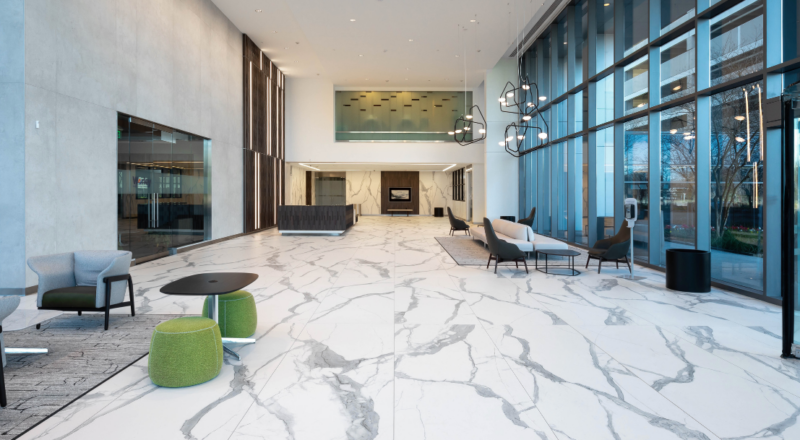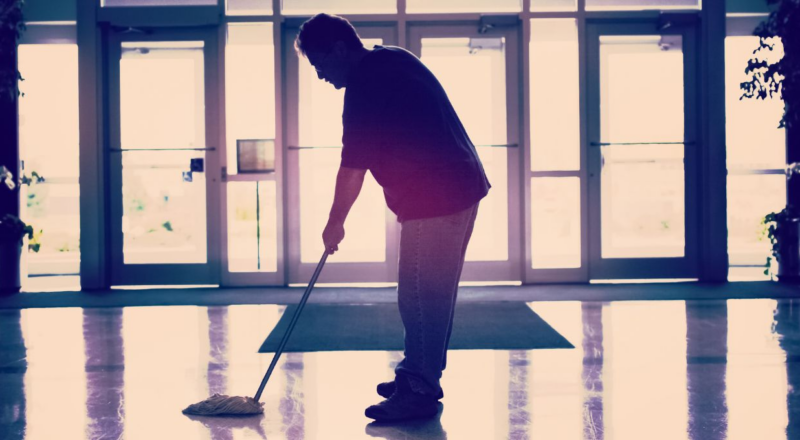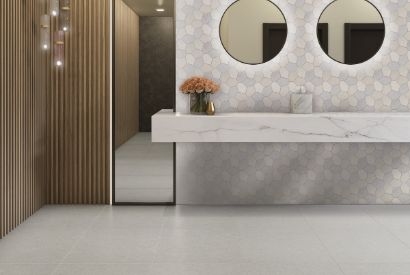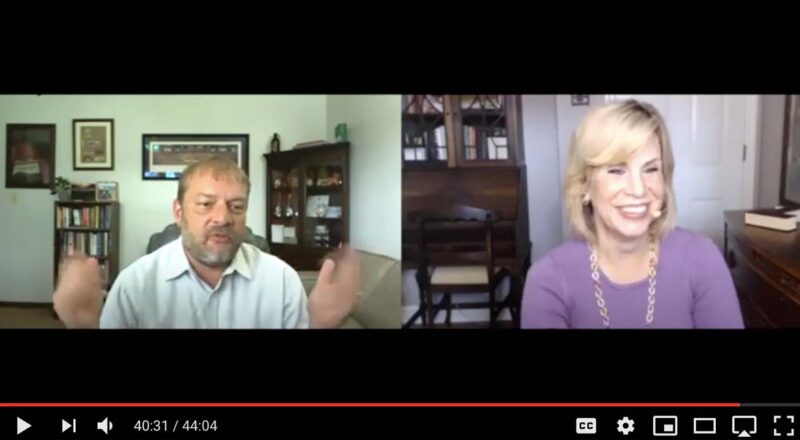Recently, the Tile Council of North America released its updated Environmental Product Declaration for ceramic tile that has been certified by Underwriter’s Laboratories and will be valid for the next five years. According to the announcement, “Effective immediately, products covered by the EPD can be used to satisfy architectural and green building specification criteria, including those established by LEED v4.1.”
Essentially, EPDs, along with Life Cycle Assessments (LCAs), are tools to help standardize sustainability reporting across industries, making the process of choosing eco-responsible products simpler and more transparent. Crossville products are included in the ceramic tile industry EPD and LCA.
The new EPD announcement is significant in a couple of areas:
- EPDs for ceramic tile are significantly lower than those reported by EPDs for flooring comprised of plastic based materials, such as luxury vinyl tiles and planks
- EPDs impact LEED credit – full credit from manufacturer, half credit from industry EPD; now you can get contribution credit for both
Noah Chitty, Crossville’s Director of Technical Services, explained further, “So it used to be in older versions of LEED, you had to choose do you want credit if you do your own EPD as a manufacturer or do you want the credit, which was half credit, if you participated in the industry EPD. The new version of LEED allows you to actually get contribution for both, more credit for doing your own but still half credit for doing the industry. But now you can combine them and you can get credit for doing both.”
“Global warming potential and fossil fuel depletion throughout the full life cycle of a product are key metrics in characterizing carbon footprint. Not only does the North American industry-wide EPD for ceramic tile evidence a generally low carbon footprint, it also shows ceramic tile to have the lowest overall impacts in photochemical oxidant creation (smog), ozone depletion, acidification, and eutrophication potential when compared to publicly available EPDs for competitive flooring materials,” said Bill Griese, TCNA’s Director of Standards Development and Sustainability Initiatives. “Ceramic tile is the proven green choice for the good of the environment.”
Crossville proudly provides complete sustainability documentation for our products and processes so that you can specify Crossville with confidence. Additionally, check out our in depth resource list for LEED Green Building Information.
Looking for more comparative insights for LVT and ceramic tile? A recent university study reveals that LVT supports mold growth, while ceramic tile does not. View the full report here: https://tigerprints.clemson.edu/cgi/viewcontent.cgi?article=1113&context=bio_pubs
Tile Tech Talk with Noah Chitty (see between 20:01 to 25:44)
Video Transcript
Irene (20:01): And then a last topic, and I honestly, I just kind of saw a headline and while I have you here, it was just some kind of update to the EPD. Are you familiar with what the TCNA announced?
Noah (20:14): Yeah. So, EPDs are usually done every five years. And this year, 2019 was the five year 2019 or 2020, might’ve been 2020 was the five year renewal of the industry EPD. So it used to be in older versions of LEED you had to choose do you want credit if you do your own EPD as a manufacturer or do you want the credit, which was half credit, if you participated in the industry EPD. The new version of LEED allows you to actually get contribution for both, more credit for doing your own but still half credit for doing the industry. But now you can combine them and you can get credit for doing both. And again, we participated in the new industry EPD and that type of information we can use to compare our own carbon footprint or own global warming potential to other industries. So like if the vinyl industry does an EPD, then we can look at that EPD and say, ‘Hey, tile’s global warming potential or its carbon footprint is less than.’ And so it gives us another way to tell the story of tile even against other finishes for those people looking for that type of information about which products to choose.
Irene (21:40): Nice. That’s great. Well this is all really good news, you know for the industry and for Crossville.
Noah (21:47): yeah, for sure it is. It’s just a matter of staying in the front of it, in participating. But Tile Council’s done a really good job for us pushing these initiatives. We’re super happy with our sustainability consultant who’s helping us navigate these for years. We’ve been, I mean, as you said, we’ve been doing these sustainability things for years now we’re just starting to be able to put the pieces of the puzzle that we’ve had into a puzzle that means something. And simply, it has to be simple. It’s not an elevator pitch, but it’s gotta become less complicated enough for everybody to know how to capitalize and utilize the information when they’re talking to them.
Irene (22:30): Yes. And that’s why we’re having this conversation. Cause I said good for the industry. Good for Crossville, but that’s ultimately good for anyone who sells tile or specifies tile. That’s the end goal, you know,
Noah (22:43): in that respect we have to hope that rising waters, you know, so yeah. I hope this helps. I hope this helps our own folks and others.
Irene (22:53): in light of the fact that we’re recording this while safe at home measures are still in effect and the pandemic is in its thick middle. Do you perceive any of this having any long term effect on how specifiers would prioritize sustainable features of tile or HPD kind of stuff? Just, just curious, just to top line perspective.
Noah (23:24): Yeah. You mean how the environment that we’re living in right now with the kind of pandemic, how that might actually affect what the,
Irene (23:32): when they specify materials and tiles advantages. Do you think those advantages will speak even more strongly in light of folks wanting to keep environments cleaner, that kind of thing?
Noah (23:45): I think there will. I think there were already firms that were much more into finding the sustainable products, that had material ingredient disclosures and EPDs and those kinds of things. I think those firms will double down on that type of information. I think one of the things that I’m looking at doing is we have generic specs that we can give that can be cut and paste from. I think we need to update those with more robust sustainability information. So when somebody writes a spec they can pick a product that’s green squared compliant or that has an EPD or that has HPDs and declare labels. But we’re going to have to do a little bit to push it on our side because I think what’s going to happen is people are gonna ask really simplistic questions that aren’t the we’re going to get questions from homeowners of how long does the virus live on your surface, you know, or something like that.
(24:39): Maybe have answers to that, but be very careful. You know, I mean we live in the United States, we have an EPA, you know, they’re there. They’re very cautious of people who are making, we can do something to protect the public health. You have to be careful about that. But I do think it’ll bring a new wave of asking questions about surfaces and building, building spaces that are healthy for everybody. Cause I think that’s the well building standard. I think it’s really starting to get some traction. And I think, those kinds of things are what are we doing for the spaces that people spend a whole lot of time in and how do we optimize how those spaces affect people in their daily lives. I do think there’ll be a bigger push for that. Hopefully the things that we’ve done already, just give us a framework in order to provide a solution for those folks.
Irene: Well, we need to be thinking ahead on all of this, you know
Noah: And we’ve got some time, not that we aren’t not busy, but, you know, evolving.
Irene (25:44): We’ll be ahead of the game as things evolve. Well, thank you.
Noah: Thanks for having me. Hopefully it’s helpful. I think we’ll see a few more Tile Council press releases about stuff. So, you know, let me know.
Irene: We’ll talk again. This is not our last time. I think we’re on to something here.
Noah: Sounds good.
Irene: Okay. Awesome. Thank you.
Noah: All right. You have a good rest of your day.





